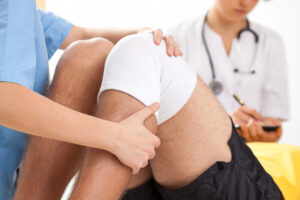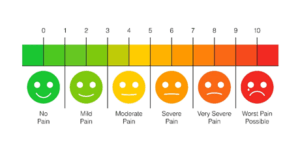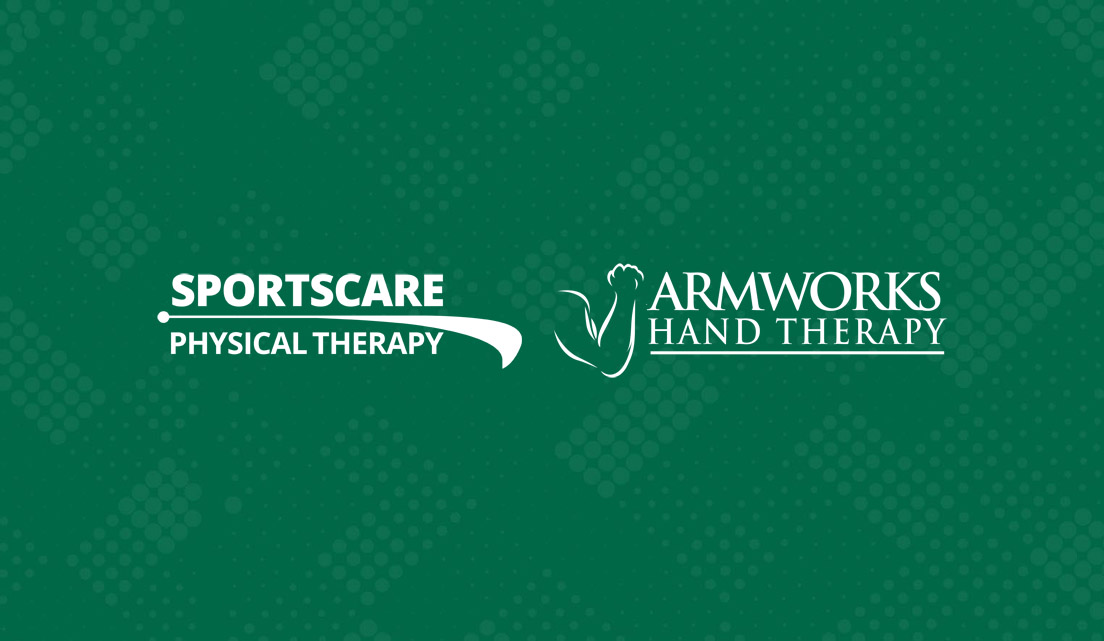 Pain, ache, throbbing, sharp, stabbing and burning…
Pain, ache, throbbing, sharp, stabbing and burning…
All words to describe the pain we feel after injury, surgery, during or after strenuous exercise and often during physical therapy rehabilitation.
How do we know what pain is significant and what pain will go away?
That is a hard question to answer.
What I will address today is how much pain is acceptable during physical therapy rehabilitation and what levels of pain should be avoided.
Pain in Physical Therapy And Exercises
Medical professionals have been taught to rate or grade pain on a 0 to 10 scale, either verbally, on a measured line graph, or by using frowning emoji’s ☹️.

Generally speaking, muscle soreness after exercise is expected and acceptable. A pain level of 1-4/10 is common and usually recedes after 24-48 hours. This is usually located in the thigh, buttocks or mid biceps muscles as an example. The saying “no pain-no gain,” usually refers to post exercise muscle pain. If you have not been exercising for quite some time and begin Physical Therapy, you should expect to feel some pain in your muscles. If your therapist has you perform exercises that work your muscles in different ways, you should expect some post exercise muscle pain.
“No pain-no gain,” does not apply to pain in your joints. Pain in a joint – directly in the knee, shoulder or ankle – should be avoided during normal exercise. This is not the same thing as pain in your muscles that we experience from exercise. Pain in the joint usually means something else. Tendinitis, sprain, strain, arthritis or worse.
Now, here is where it gets a bit sticky… It is not always easy to distinguish between what pain is acceptable and what pain is not acceptable. For example, pain in your upper arm – the Deltoid muscle area – is often a site for referred pain from the Rotator Cuff tendons. What may seem to be simple muscle pain may actually be pain from the joint tendons, which is pain that we try to avoid or minimize. Your therapist can distinguish between the two therefore you should always let your therapist know what you feel and where.
Levels of Pain
Pain experienced during physical therapy rehabilitation is common. Just ask anyone who has had a total knee replacement or has suffered through a frozen shoulder! Re-gaining range of motion in the knee or shoulder can be painful. This is usually joint pain. Pain ranging from 1 to 5 is typical as long as the pain level quickly subsides back to the pre-stretching level. For example, if the pain level in your knee is 1-2/10 most of the time but reaches 4-5/10 while doing a slow gradual bending stretch (flexion), this is considered “normal” if the pain level gradually decreases back to 1-2/10 within one to two hours. If the pain level stays at 4-5/10 all day and into the next day, then you were too aggressive during your stretching (or something else is going on).
Know that almost everyone feels pain when doing rehabilitation. It is typical and often expected. Believe me when I say that going through the pain now is much better than having to live with permanent loss of motion, function or strength the rest of your life!
“Pain is temporary. Quitting lasts forever” – LA

